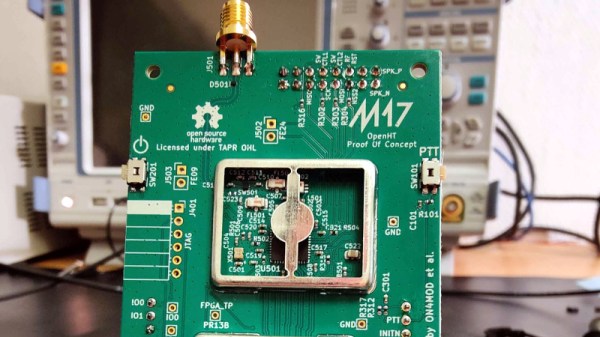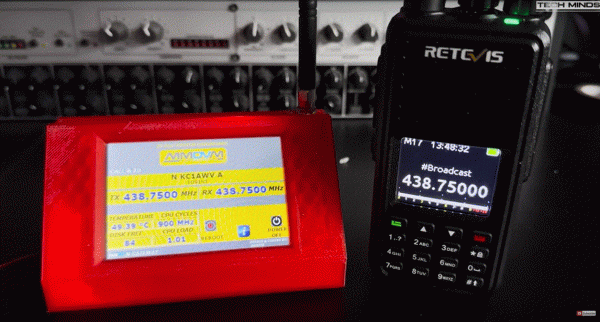Digital modes are all the rage these days in amateur radio — hams are using protocols like WSPR to check propagation patterns, FT8 to get quick contacts on many bands with relatively low power, and MSK144 to quickly bounce a signal off of a meteor. There’s also digital voice, which has a number of perks over analog including improved audio quality. However, the major downside of most digital voice modes, at least those in use on UHF and VHF, is that they are proprietary with various radio brands having competing digital standards. To get above the noise a more open standard can be used instead.
The M17 standard, originally created by [Wojciech Kaczmarski] aka [SP5WWP], uses Codec 2 to convert voice into a digital format before it is broadcast over the air. Codec 2 is an open standard unlike other audio codecs. M17 also supports reflectors, which can link individual radios or entire repeaters together over the Internet. While you can make purpose-built modules that will interface with most standard radio inputs, it’s also possible to modify existing hardware to support this standard as well. The video below from [Tech Minds] shows this being done to a radio with only a few hardware modifications and the installation of a new firmware.
For anyone who has been frustrated that there’s no real universal standard for digital voice in VHF and above, M17 could be a game-changer if enough people get tired of their friends being on other proprietary digital systems. There’s plenty of supported hardware out there that most hams probably already have already, including a number of TNC devices like the Mobilinkd and the DigiRig, so it shouldn’t be too hard to get started. If you’re more into networking over radio, though, take a look at this method for sending high-bandwidth IP networking over the UHF band. Continue reading “Break Free From Proprietary Digital Radio” →












